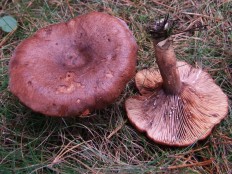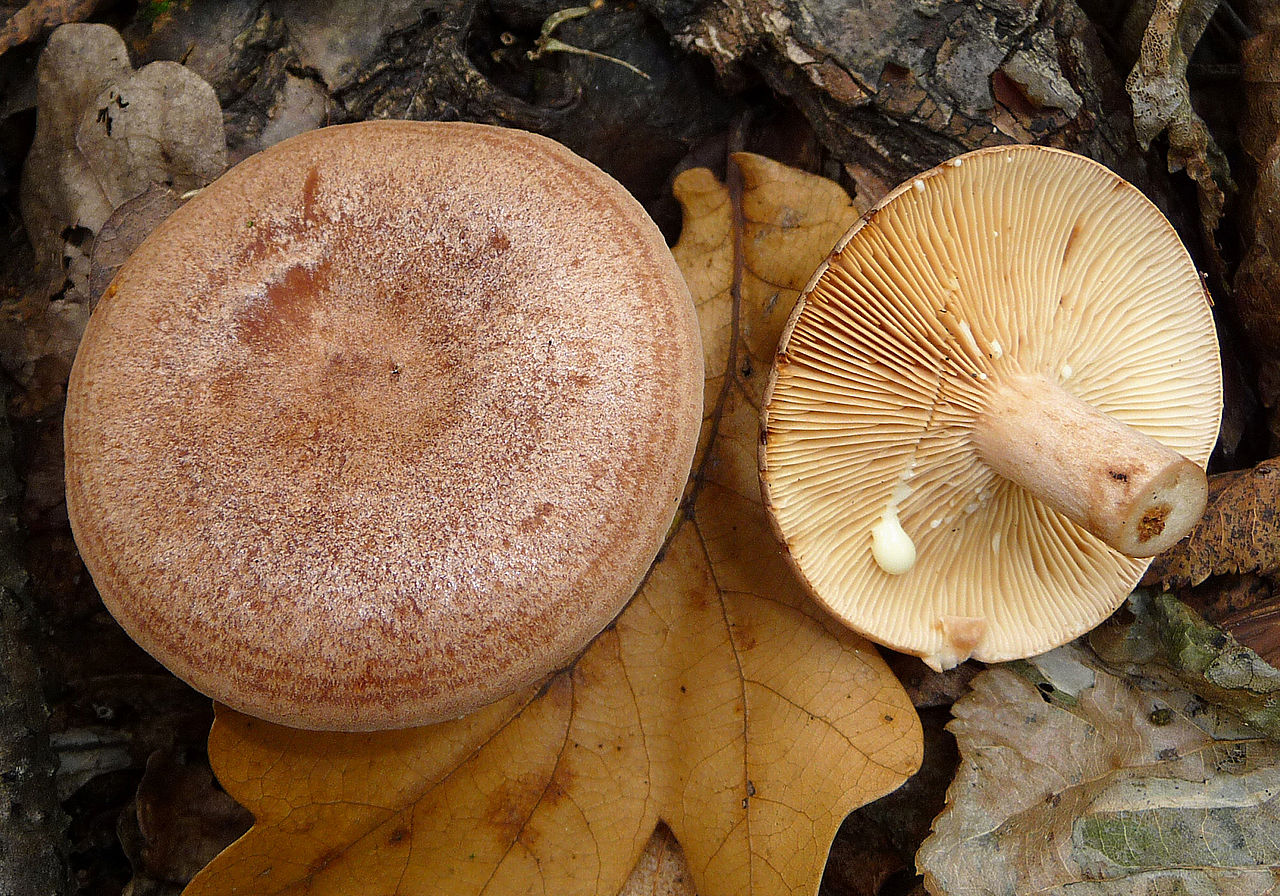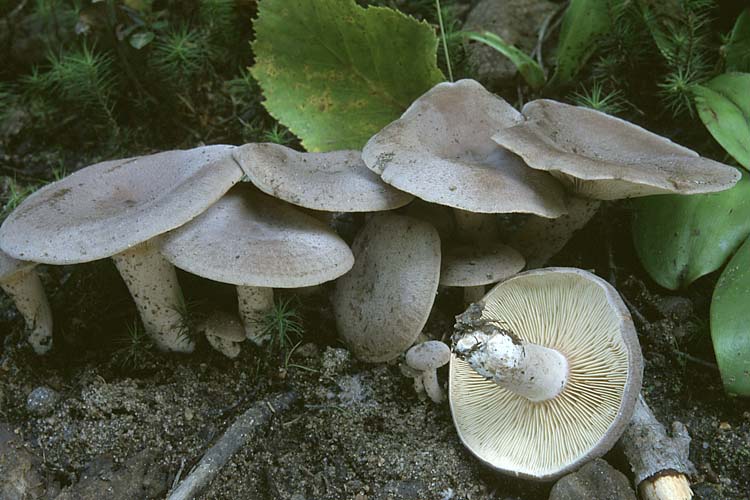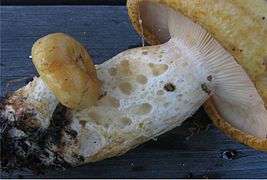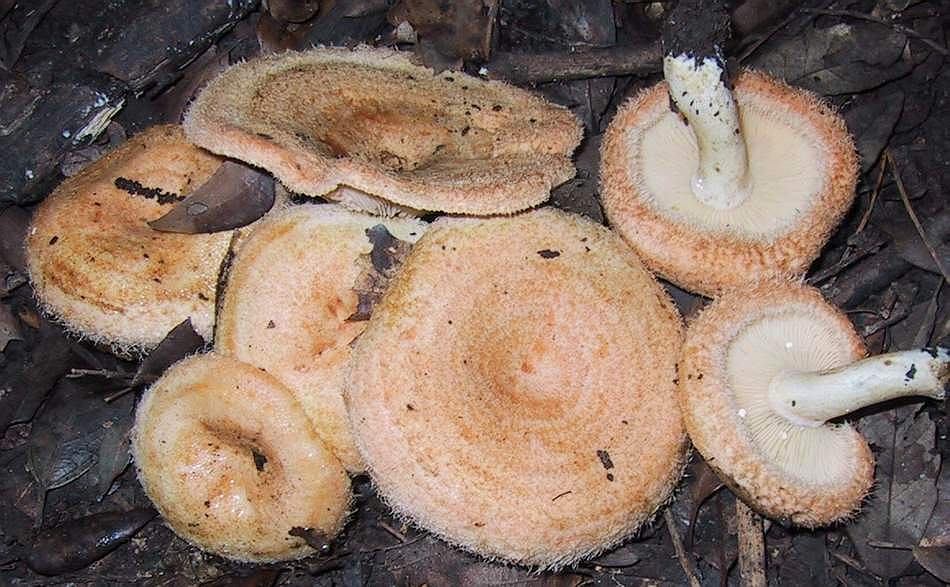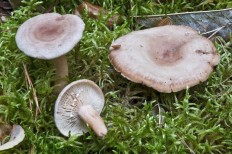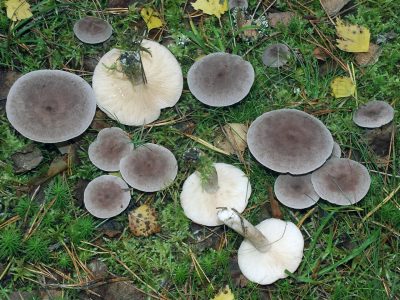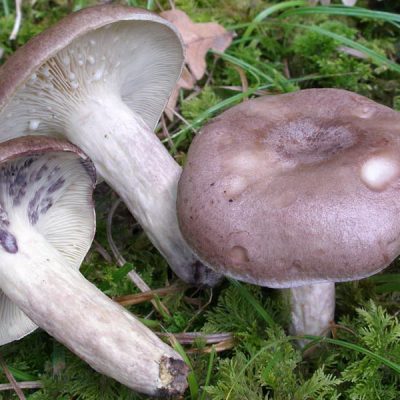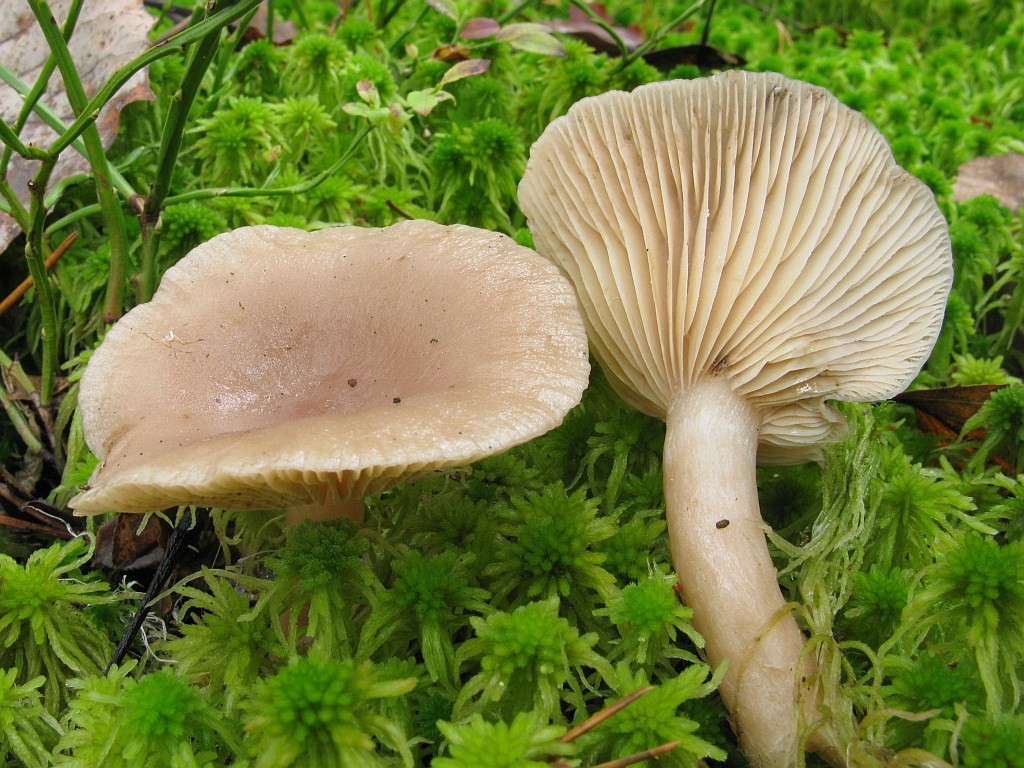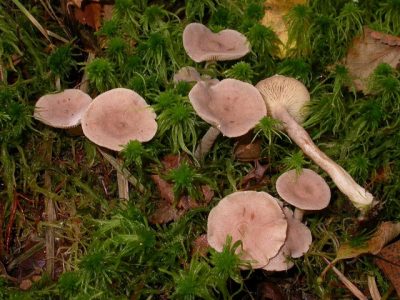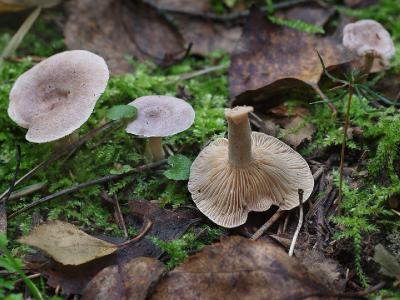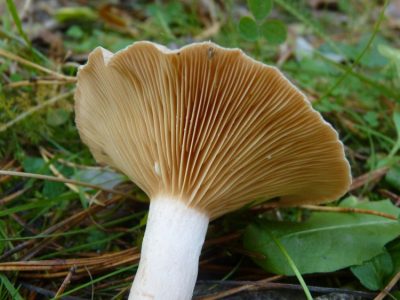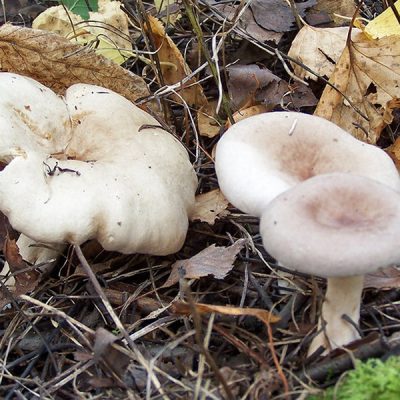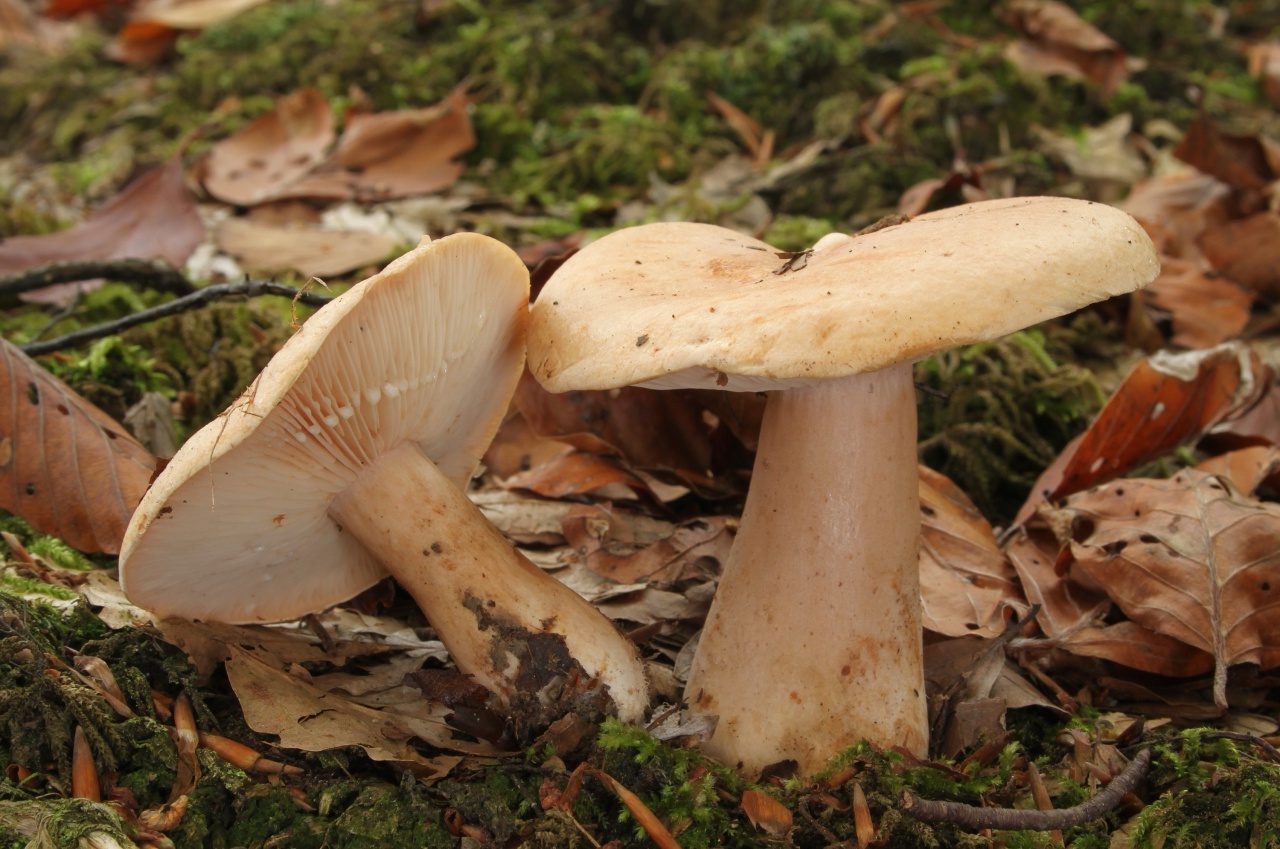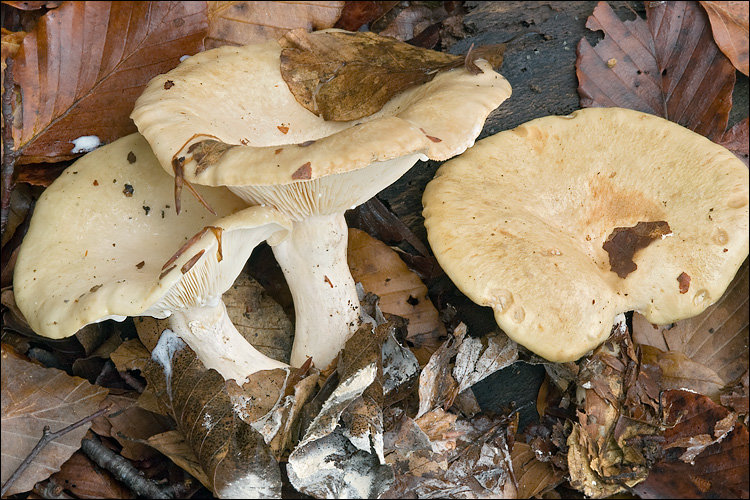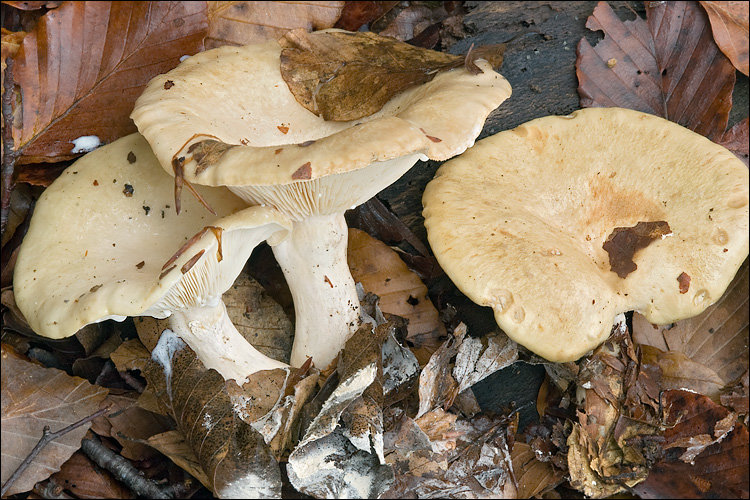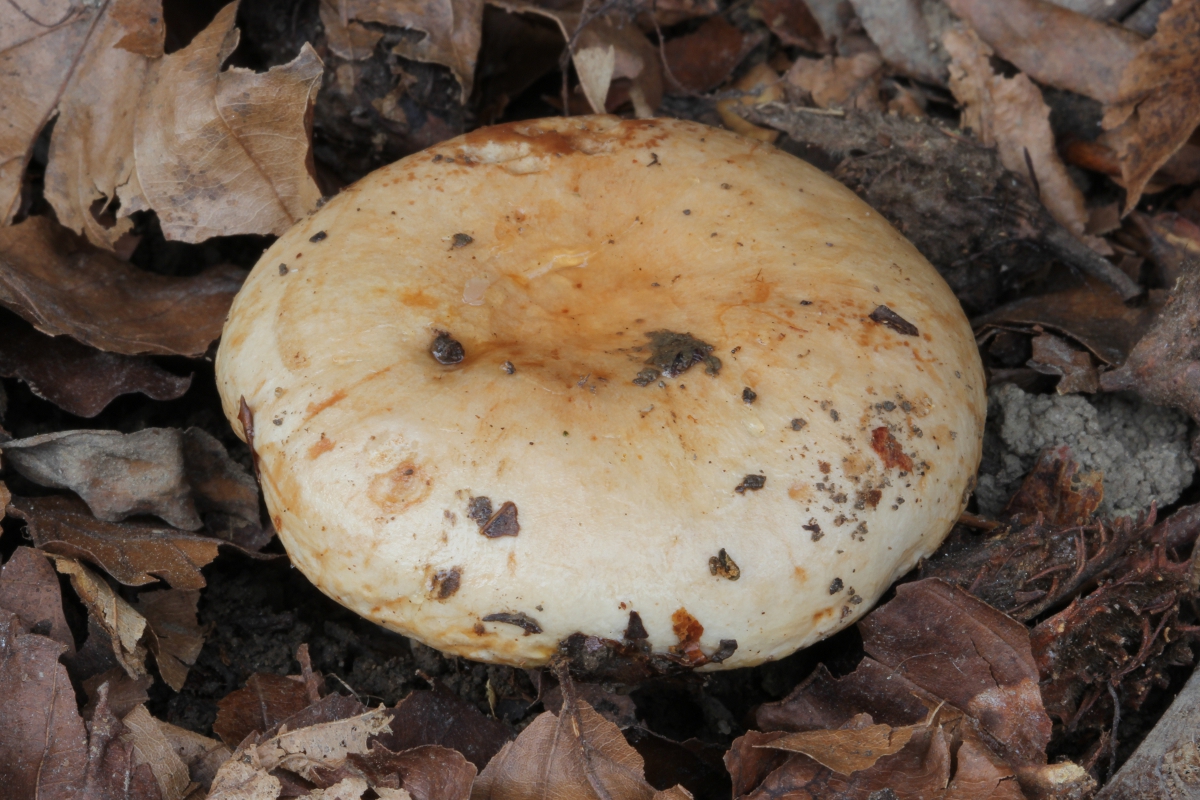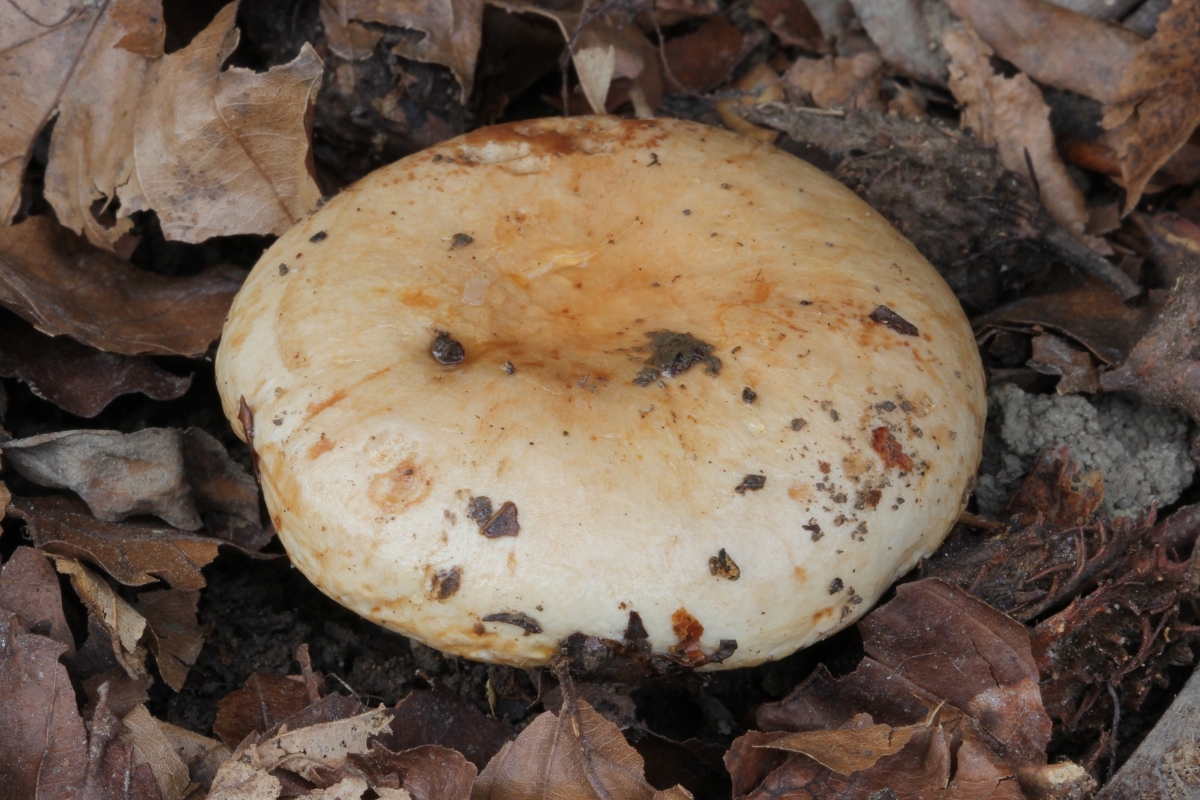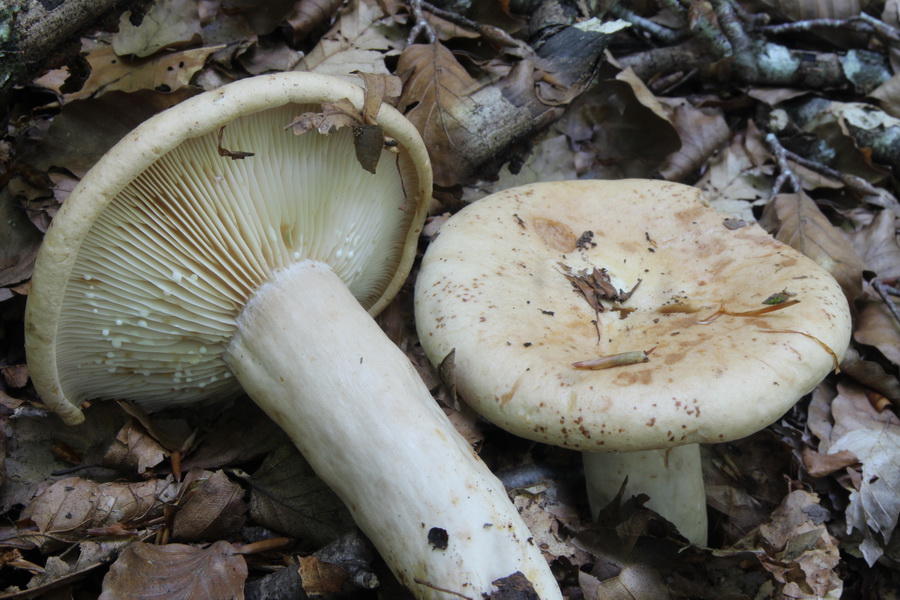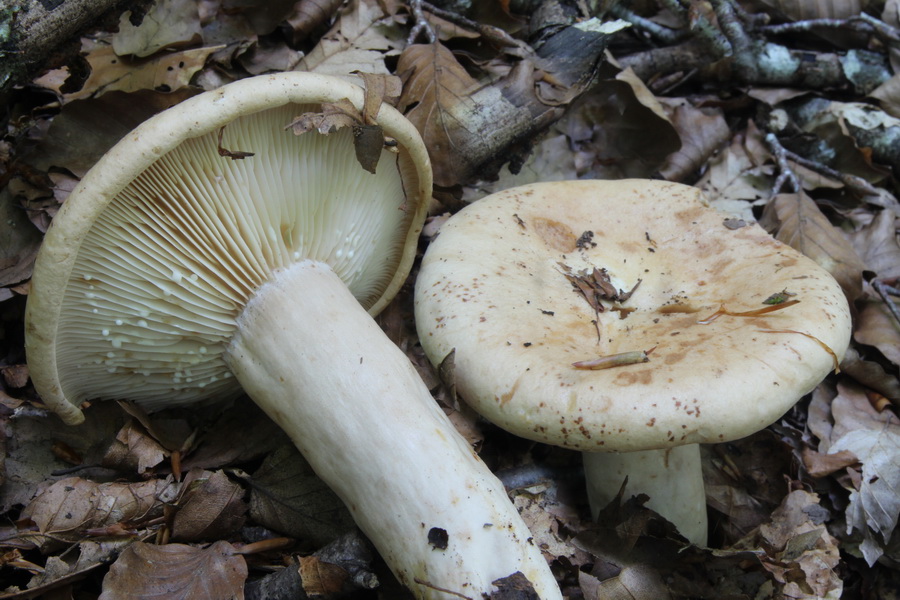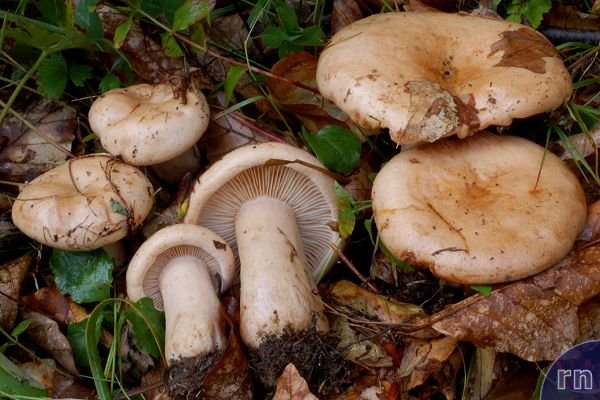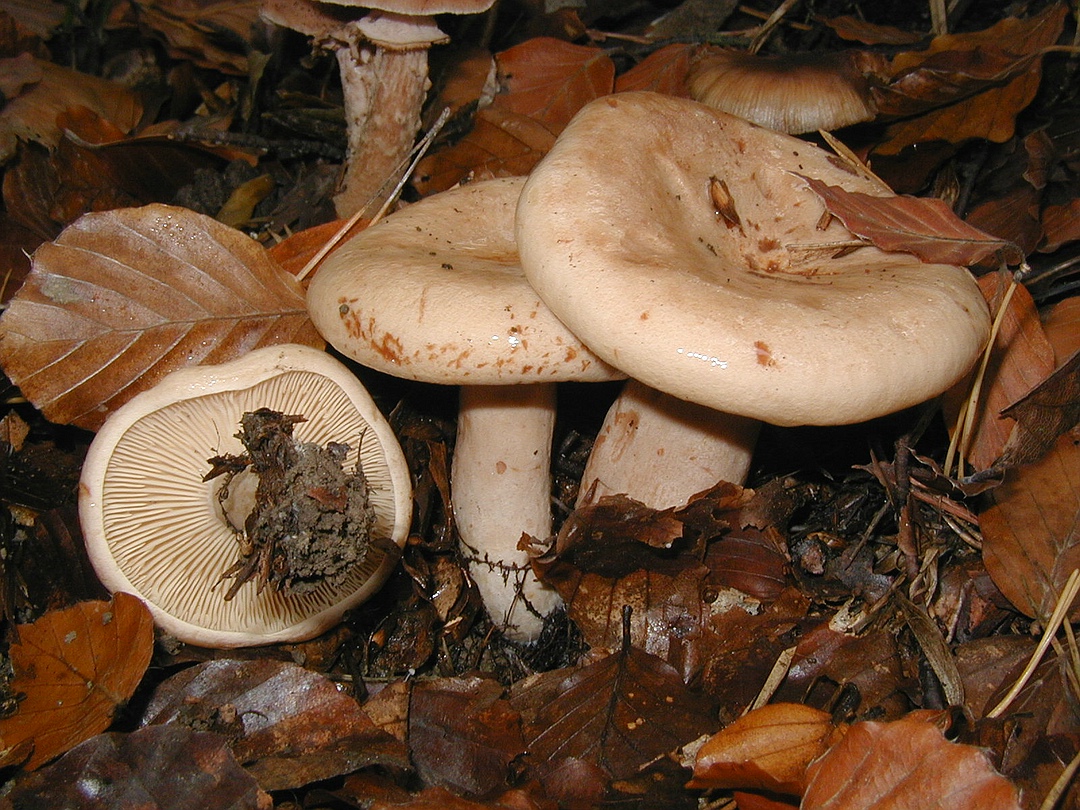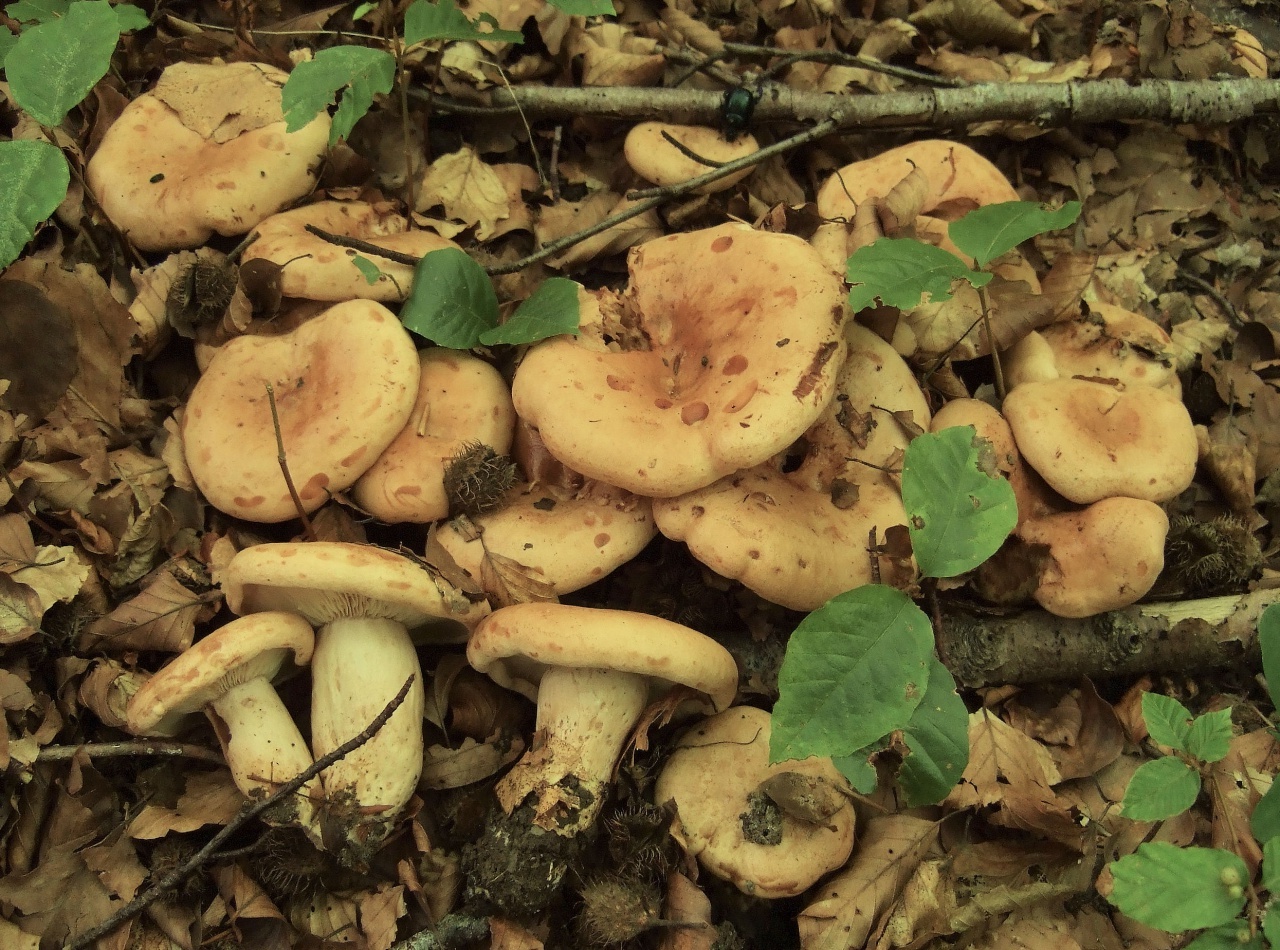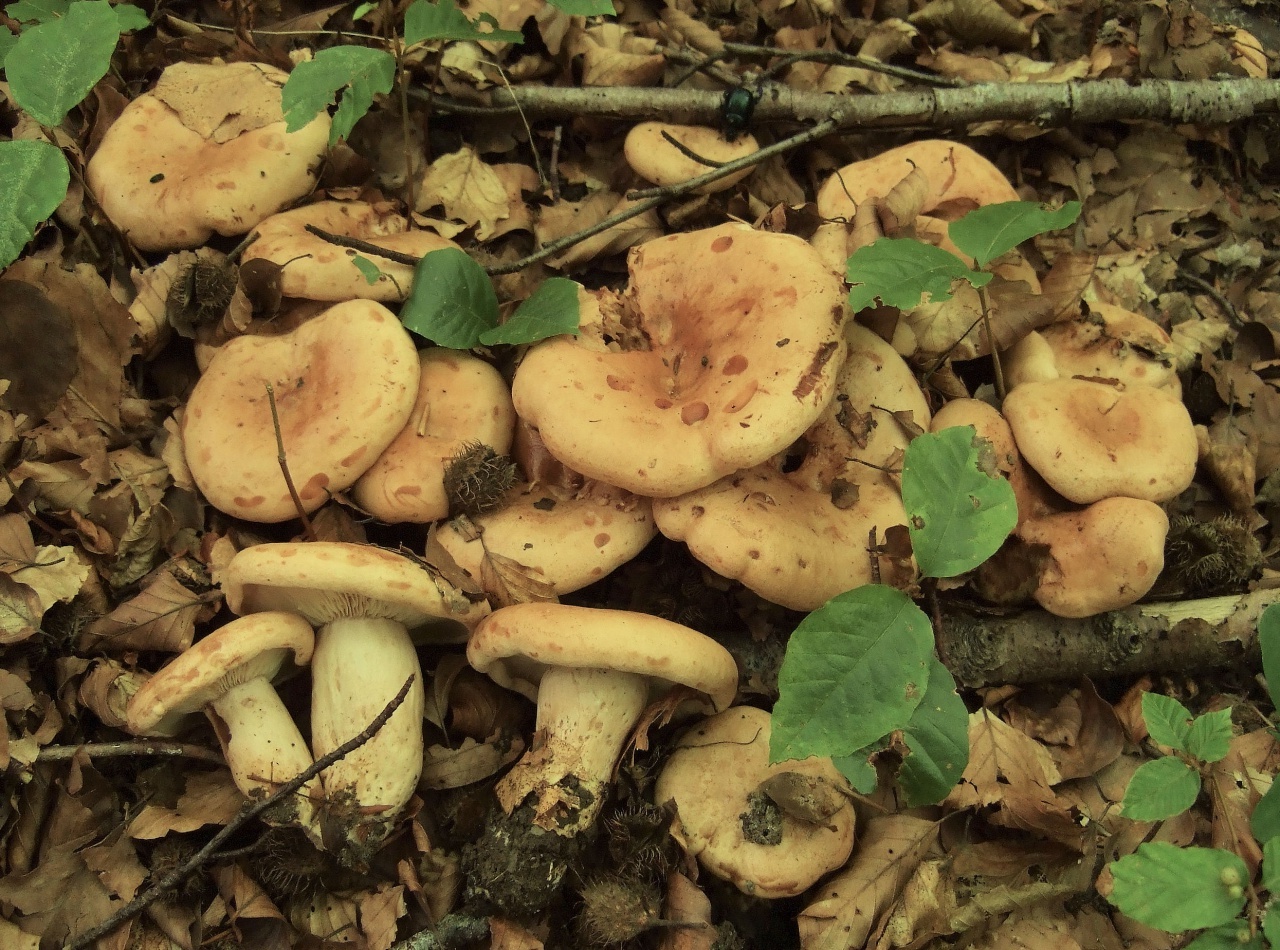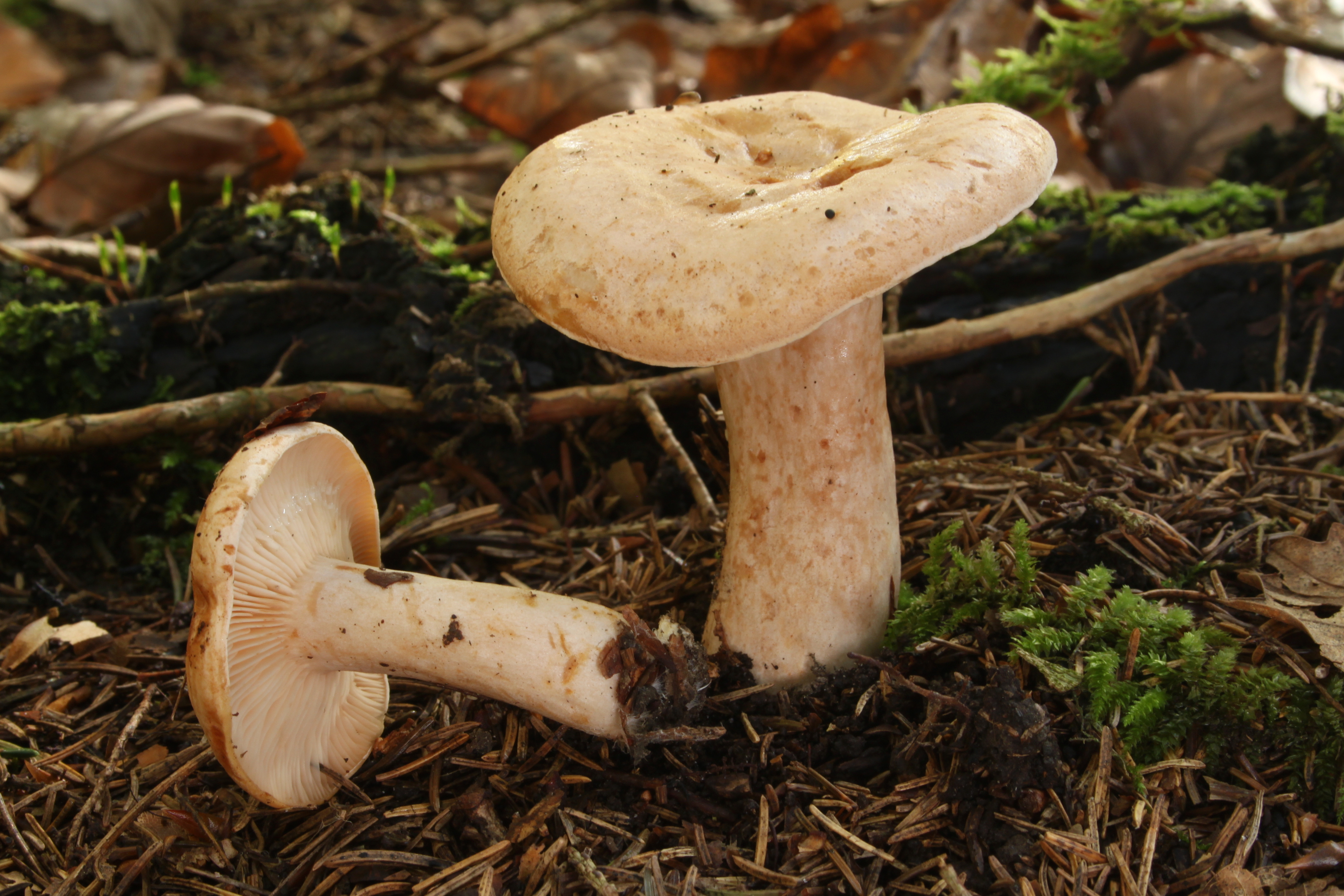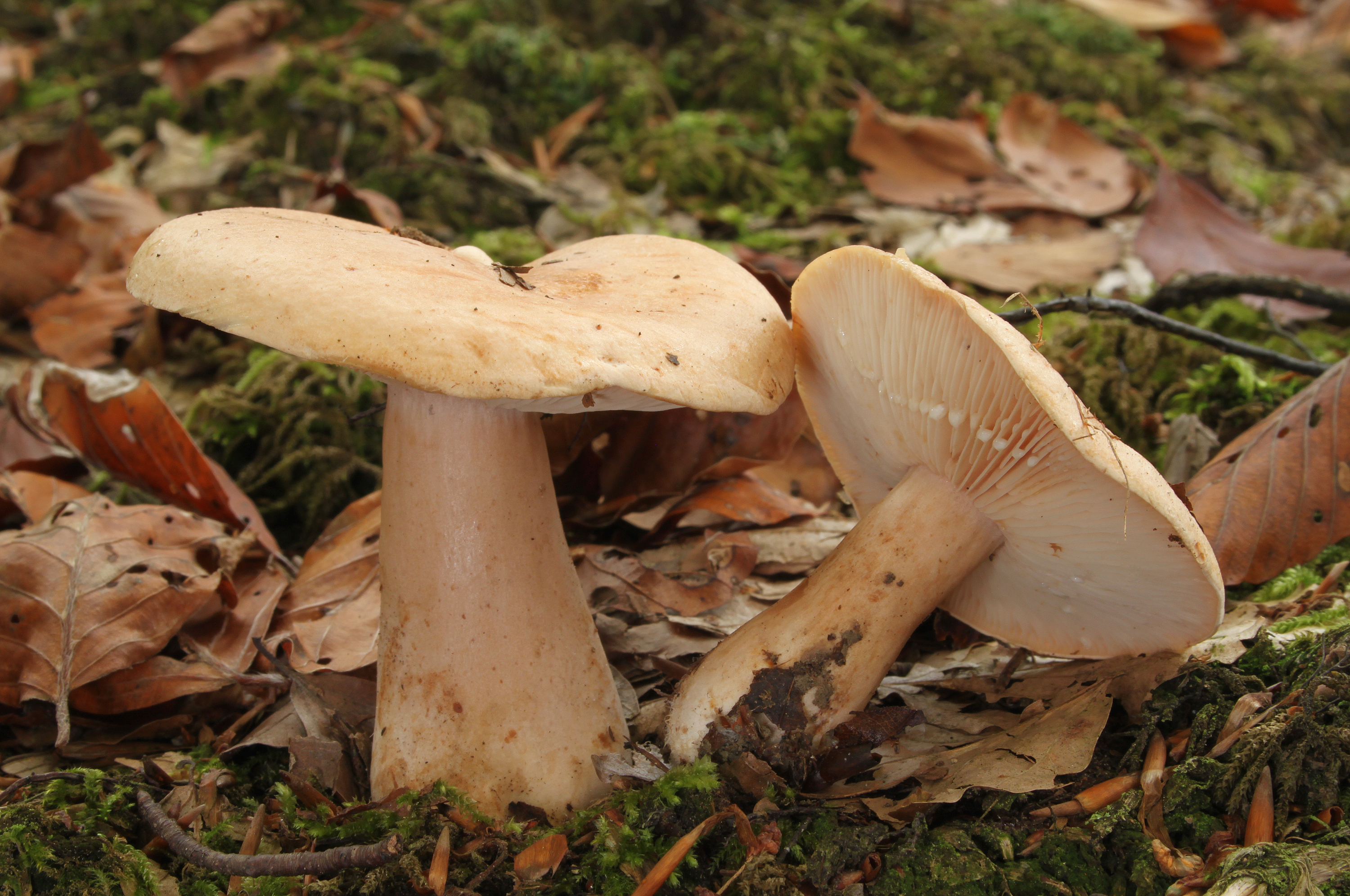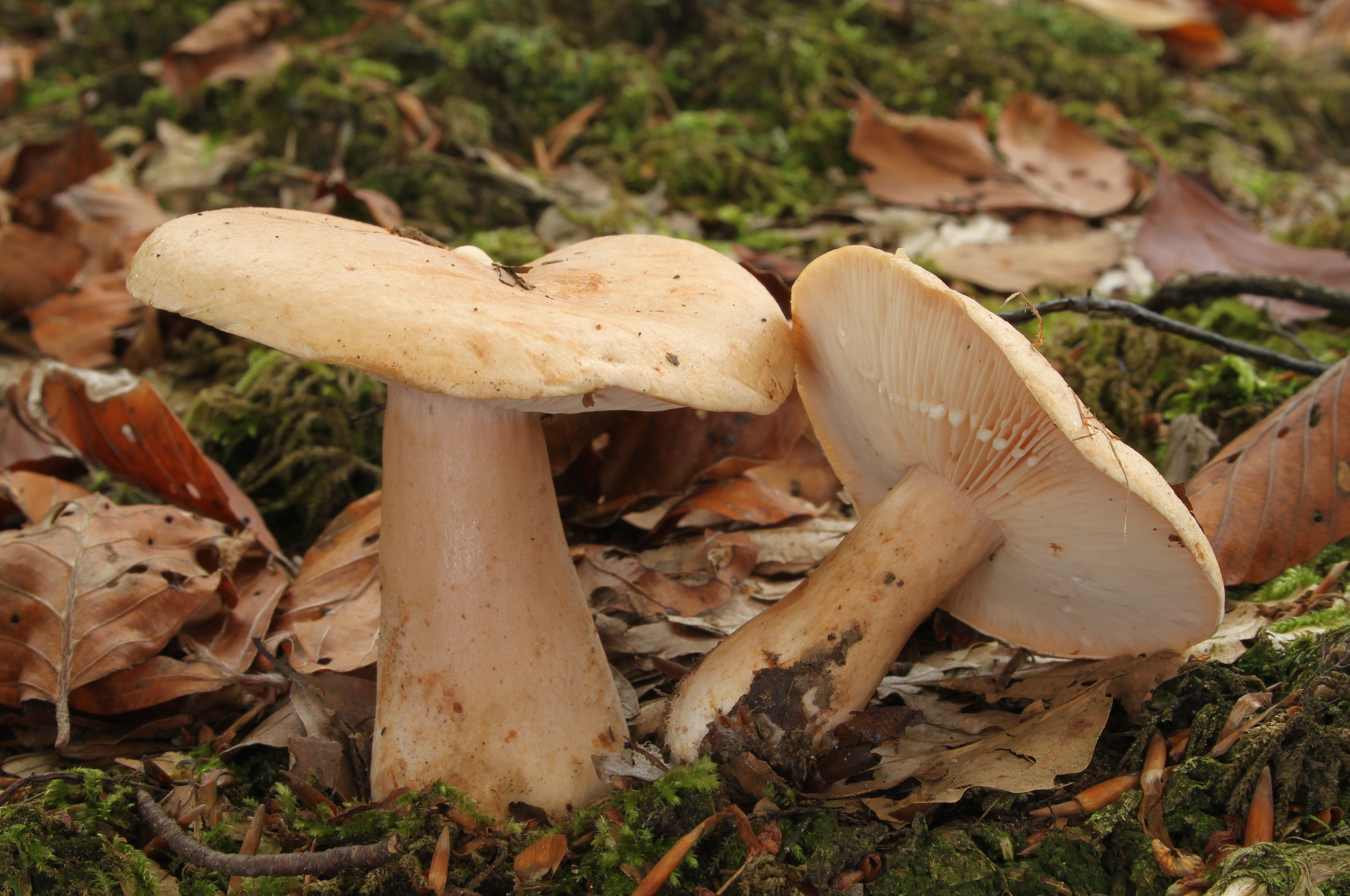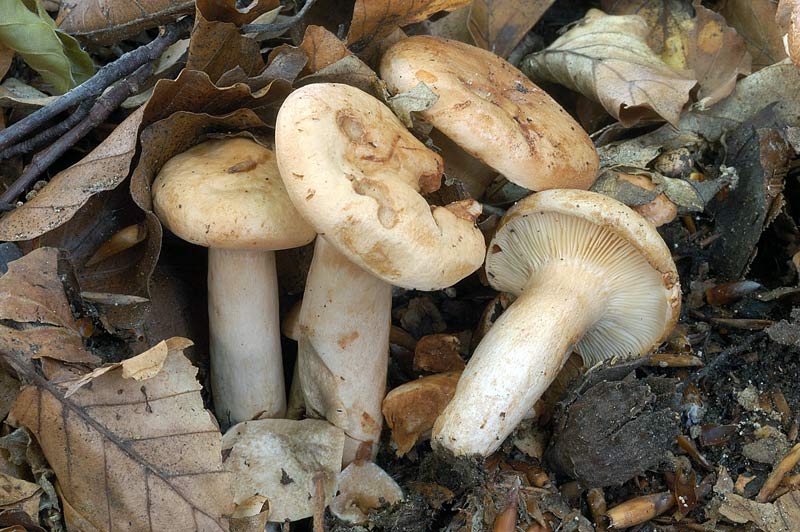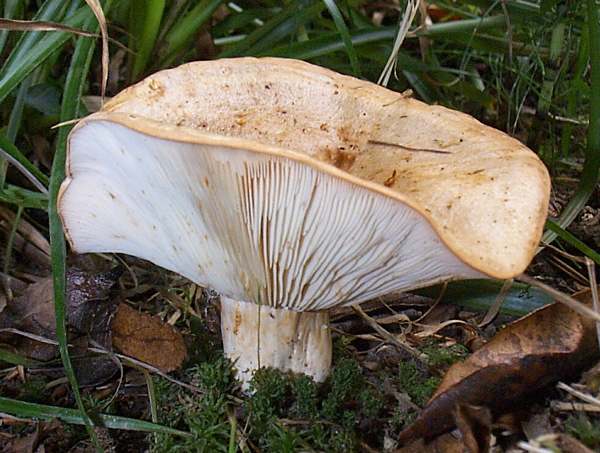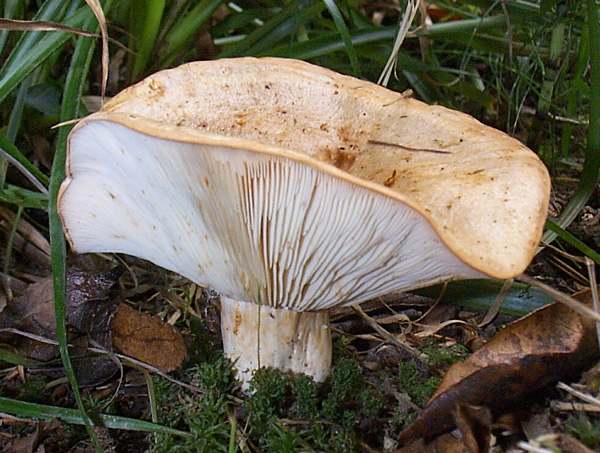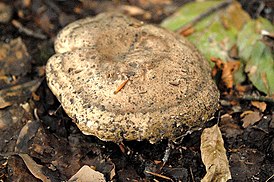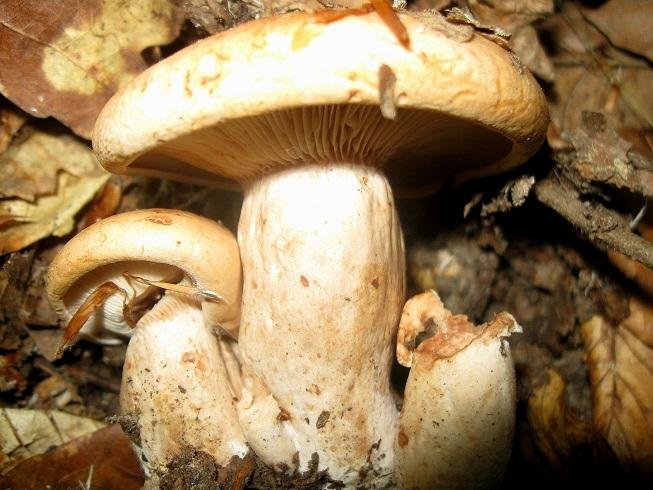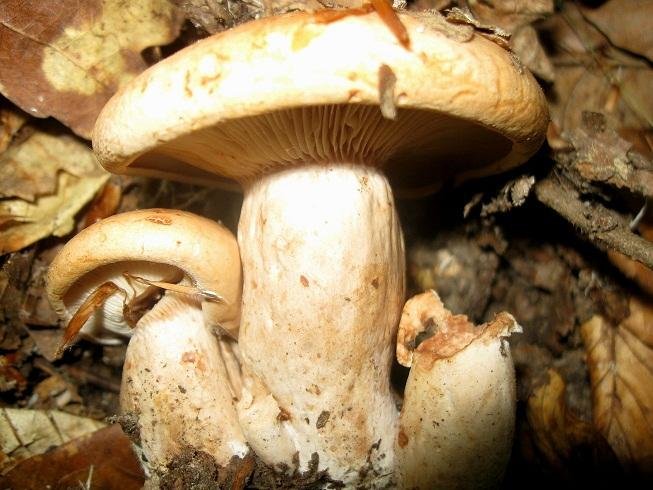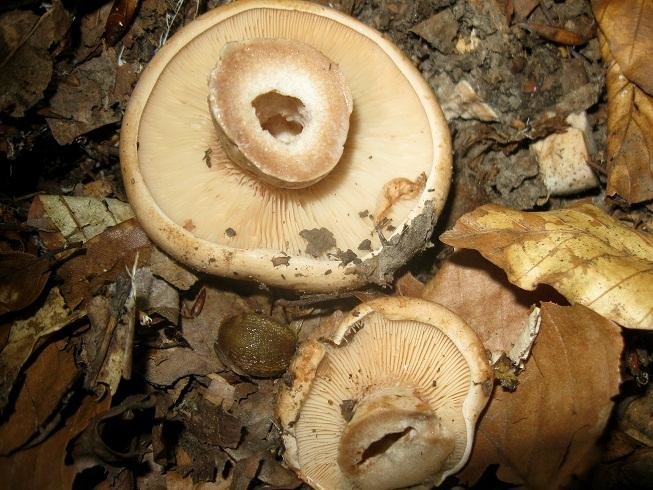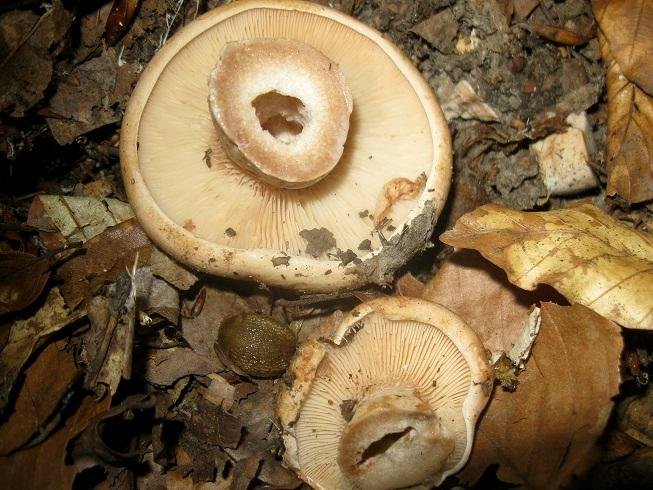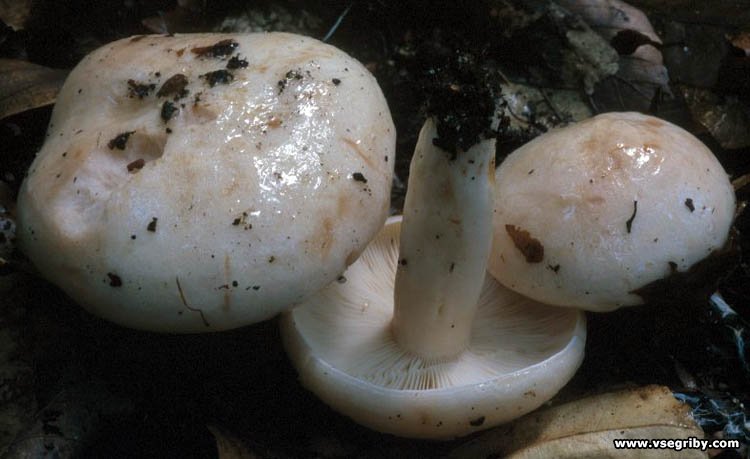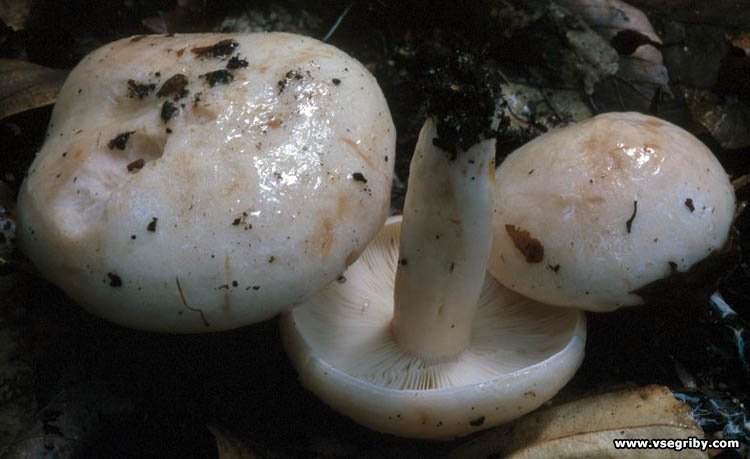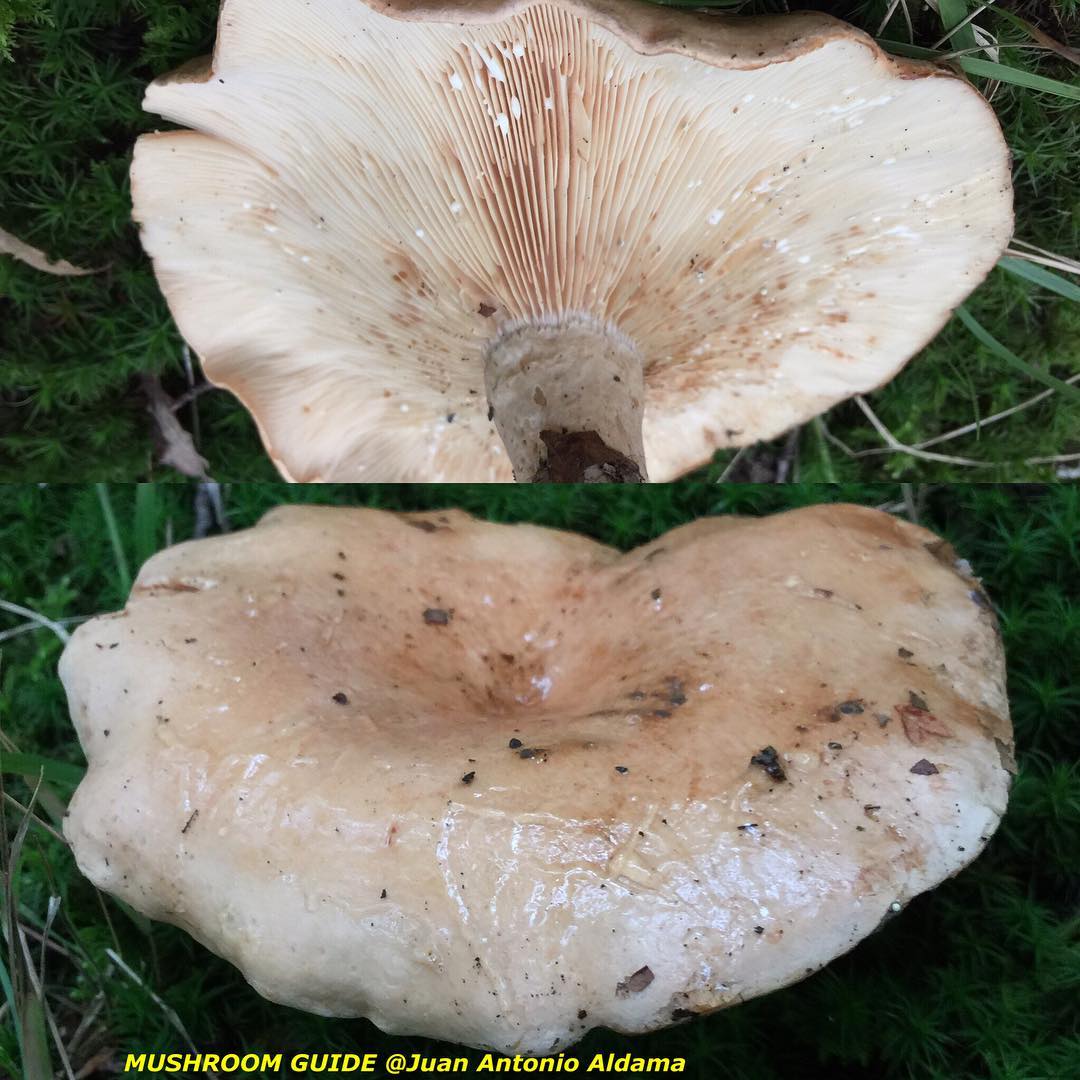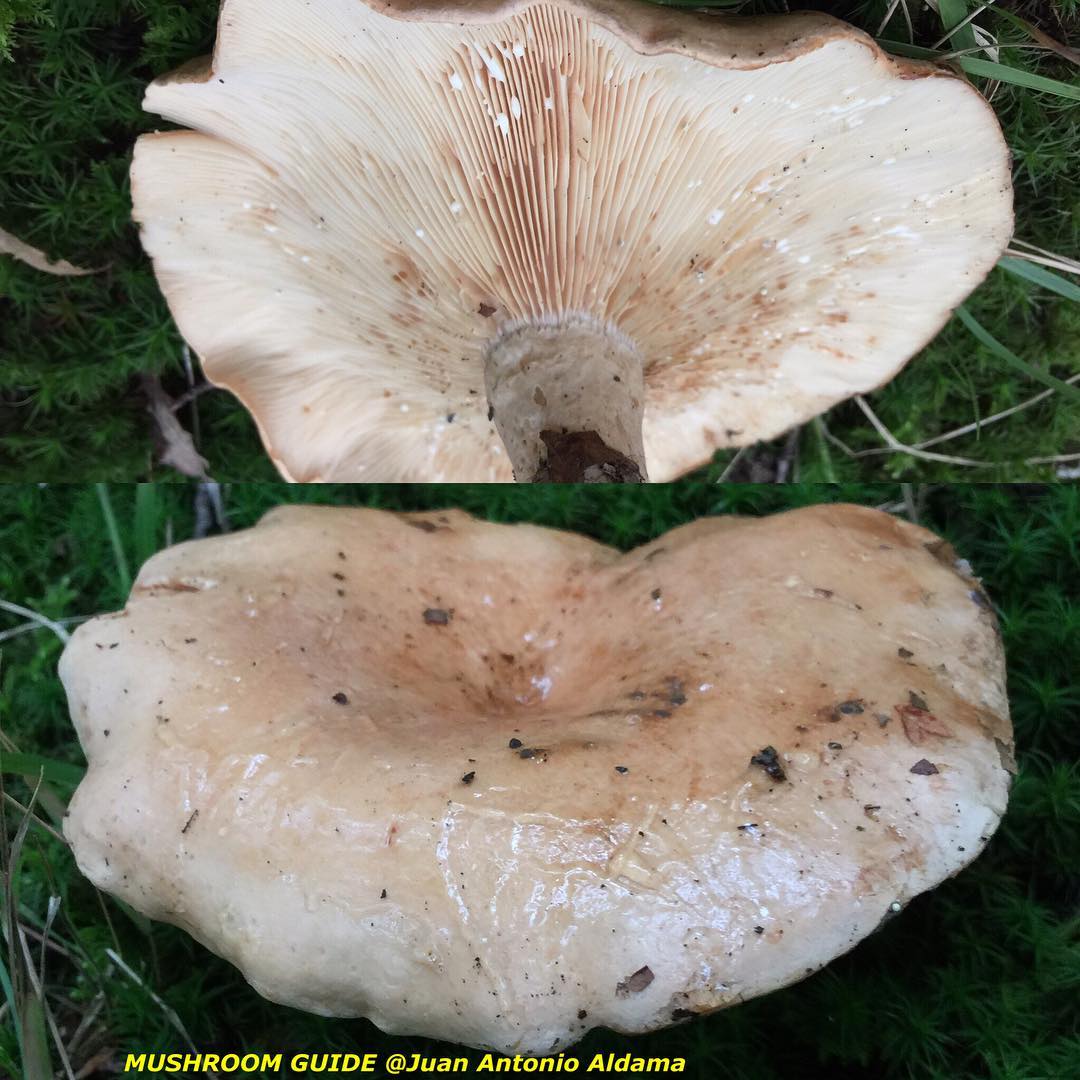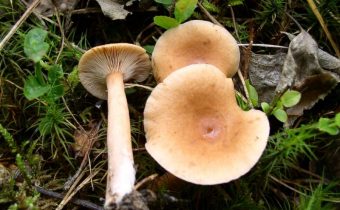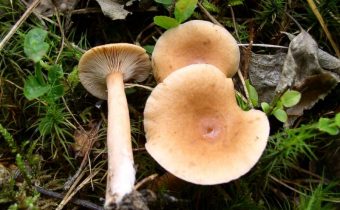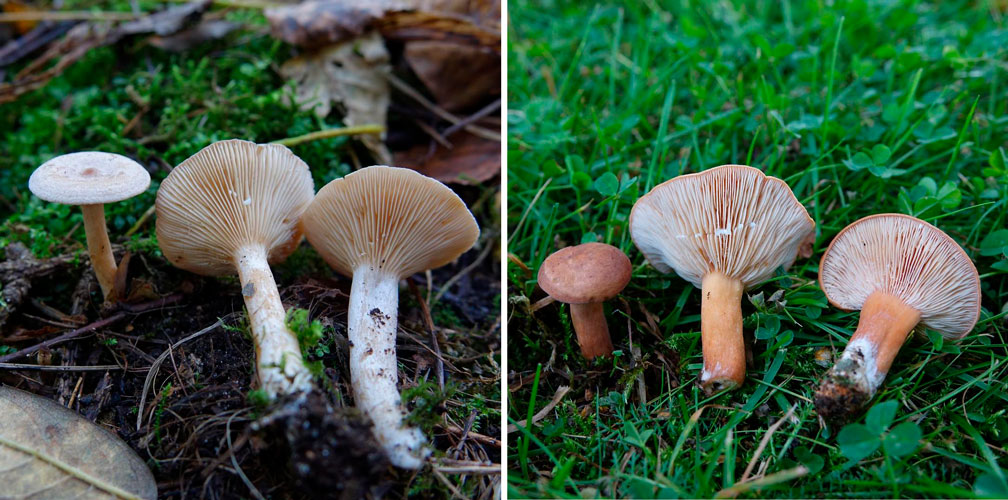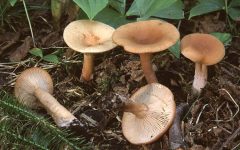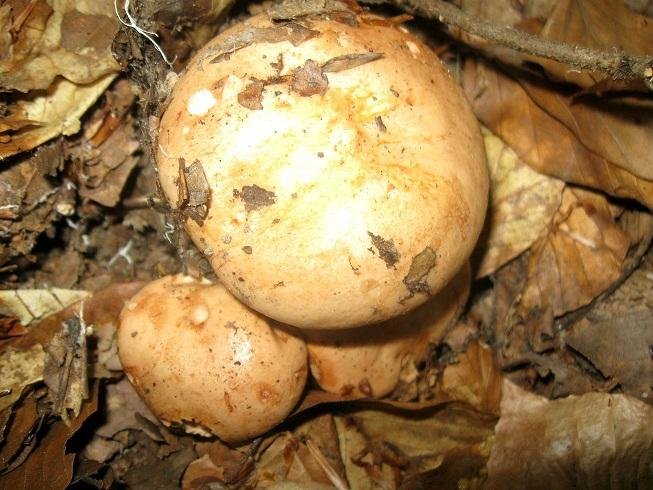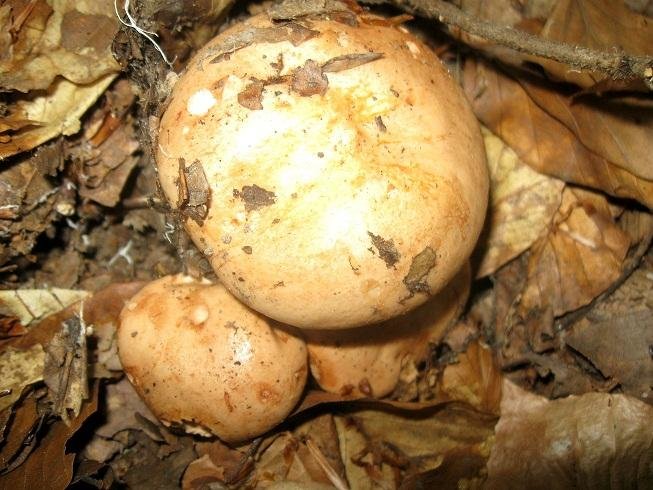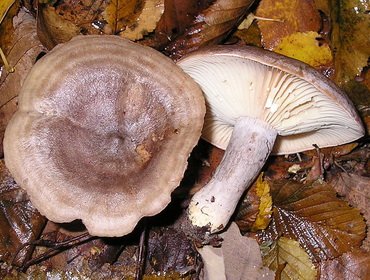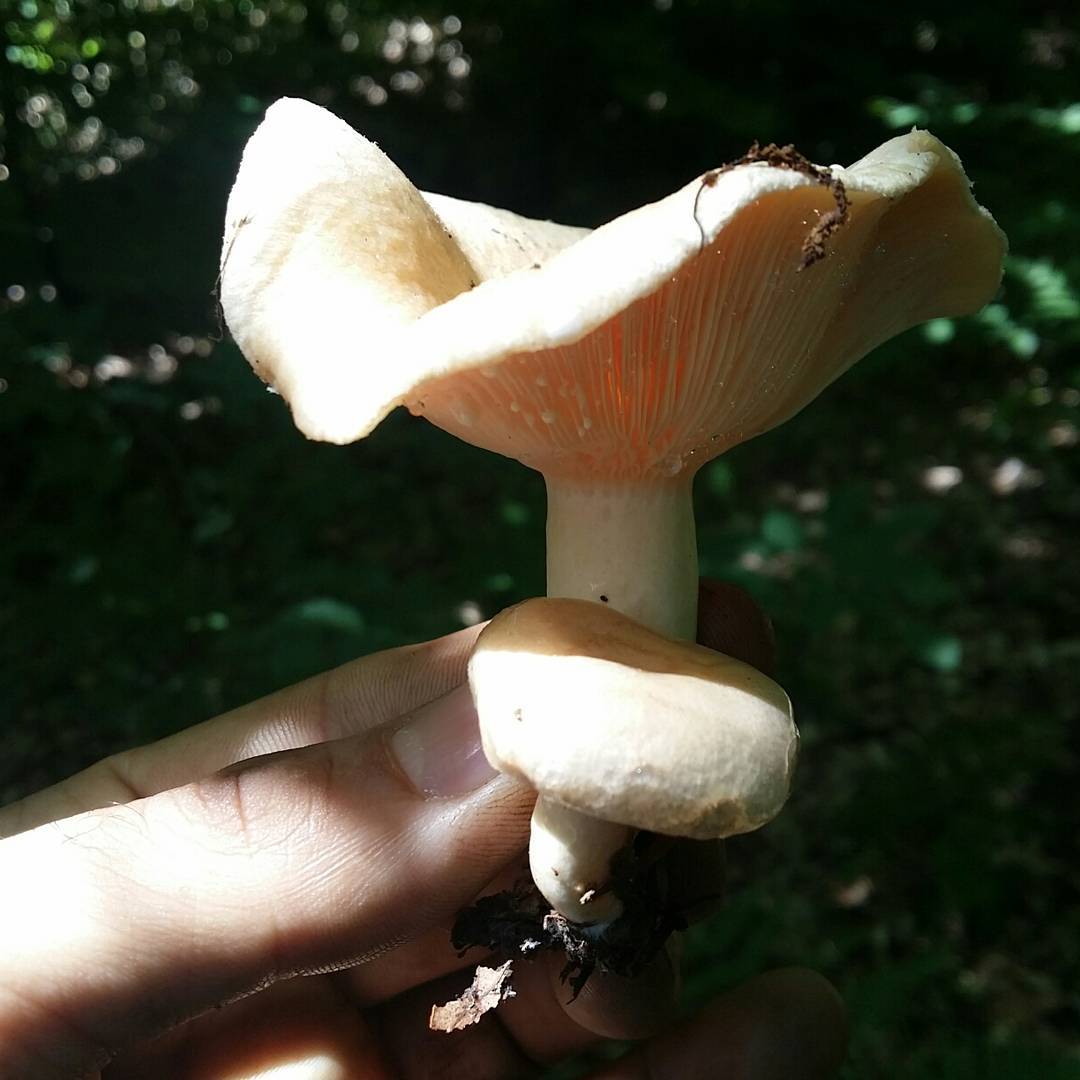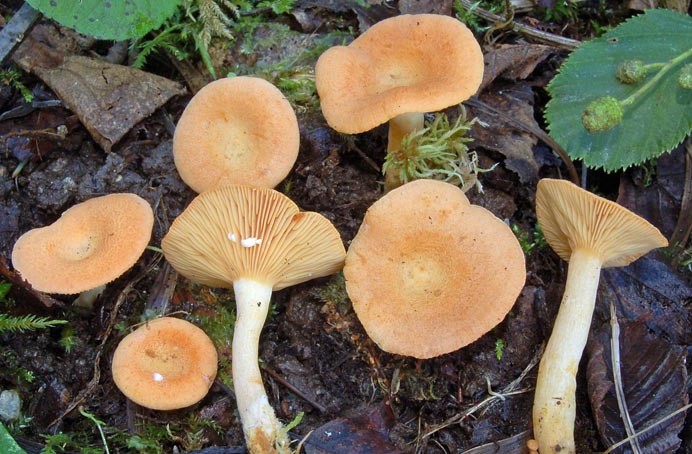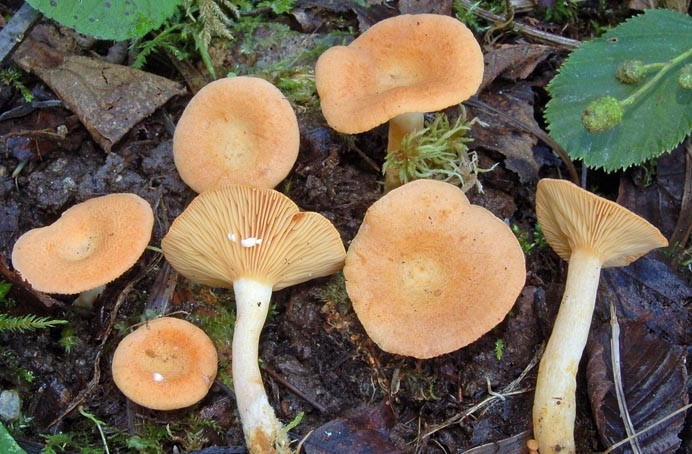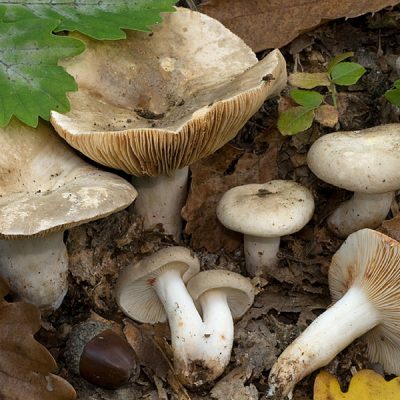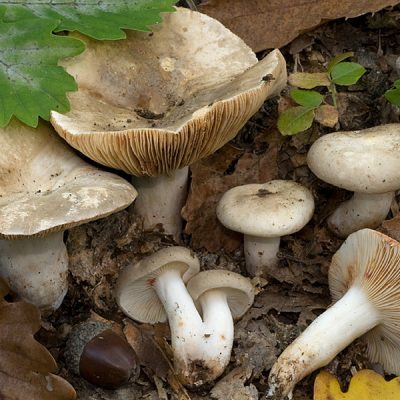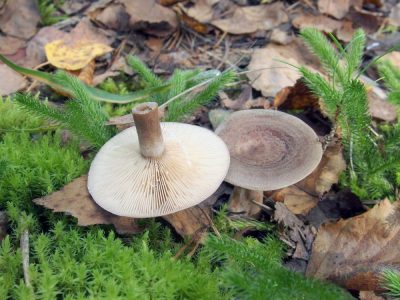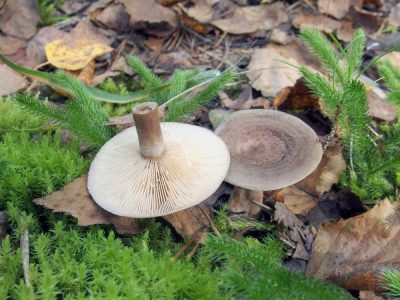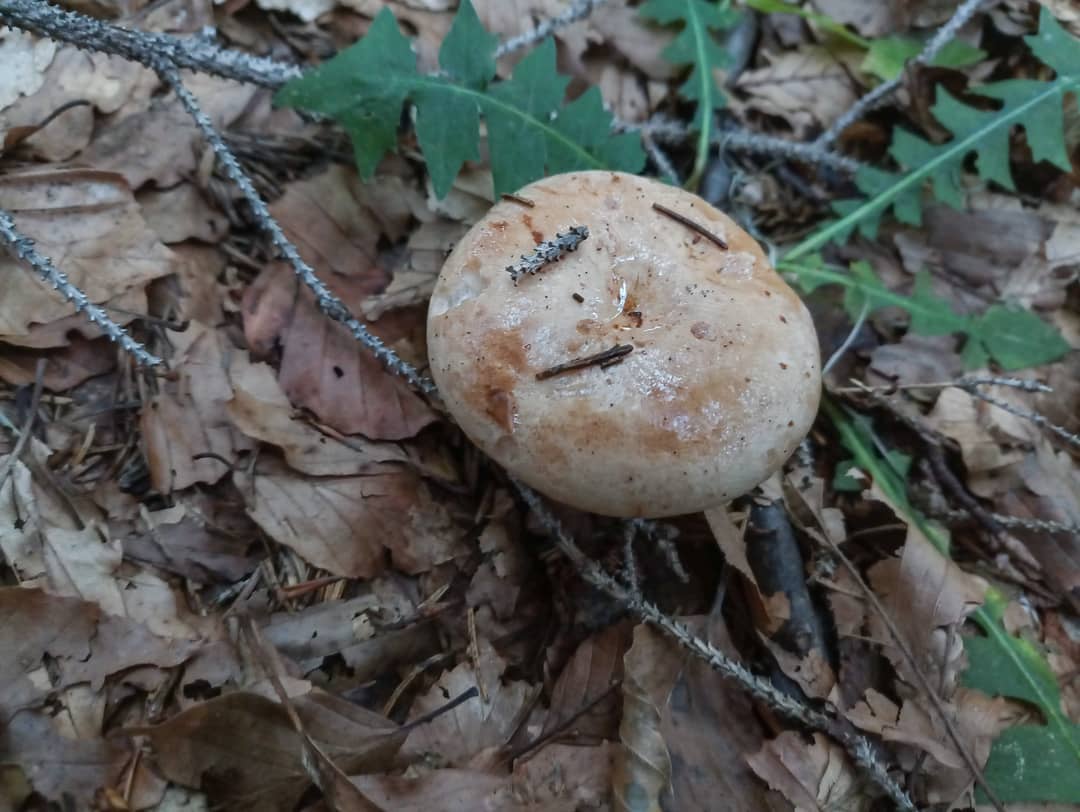Millechnik: photo and description of the genus of mushrooms. What do milkmen look like?
Millers are mushrooms with thin or thick fleshy, dense, but fragile fruit bodies, mostly of medium or large size. Their cap and stem are homogeneous (homogeneous) and do not separate from each other without breaking, as, for example, in a champignon. There are stocky mushrooms with a thick stem, approximately equal in length to the diameter of the cap (Lactarius deliciosus, Lactarius pubescens, Lactarius turpis), and there are also species in which a small cap is placed on a long, relatively thin stem (Lactarius camphoratus, Lactarius lignyotus). Both the private and the general veil are absent in fungi of this genus.
The cap of the lactarius can be funnel-shaped, depressed, convex-outstretched, or convex. In young mushrooms, it is straight or convex with the edge tucked down. White or brightly colored (yellow, orange, gray, pink, brown, blue, purple, olive-black), with a wavy, straight or ribbed edge. With age, some mushrooms change the color of their fruit chalk.
The surface of the lactic cap is dry or slimy, smooth, scaly, fleecy or velvety, monochromatic or with concentric circular zones and grooves - lacunae. The size of the cap is from 8 to 40 cm (Lactarius vellereus). In a stunted lactarius (lat. Lactarius tabidus) and a dark lactarius (lat. Lactarius obscuratus), the cap is capable of swelling, absorbing water.
The miller is stunted.
The flower is pink.
The hymenophore of these fungi is lamellar. The lamellar plates descend to the pedicle to varying degrees, attaching to it strongly in some species, insignificantly in others. Plates with anastomoses or notched, are both white and colored in bright colors: pink, bluish, pale ocher, cream. Can change color when touched. For example, the plates of the lilac lilac (lat.Lactarius violascens) are initially white or creamy yellow, when squeezed they turn purple.
Spruce ginger.
A characteristic feature of the lactarius and russula in general is the net pattern on their spores. The cells themselves, intended for reproduction, are more often spherical, broadly oval or oval in shape. Spore powder is white, ocher or yellowish cream.
Spores of the aromatic lactarius under the microscope.
The leg of the lactarius is attached to the cap in the center; its shape is regular cylindrical, flattened or narrowed towards the base. It is white or the same color as the cap, sometimes hollow inside, often with chambers or full. The surface is smooth, dry, less often slimy and sticky.
Some species have depressions (lacunae), colored somewhat darker than the rest of the skin of the leg. The height of the leg of the lactarius is 5-8 cm, its diameter is 1.5-2 cm.
Miller is neutral.
The pulp of the lactarius is fragile, white or with a brownish, creamy or fawn tint. It can change color when exposed to air. It contains conductive thick-walled hyphae with milky juice.
The color of the milky sap and its change in air are an important systematic sign by which the species of the genus are distinguished. Most often it is white, but in some species in the air it slowly turns green, gray, yellow, becomes purple, red, etc. In the North American blue milkman (Latin Lactarius indigo), the juice, like the entire fruit body, is blue.
Bitter.
The blue milkman.
Taste qualities of faded milkmen
Connoisseurs of mushrooms give preference to faded milk-keepers for their excellent taste. But to achieve good taste is possible only with proper processing of mushrooms.
In raw white milkers, the flesh is current, brittle, gray in color, practically odorless, and the taste is bitter. You can get rid of bitterness through special processing. It is best to boil the milkmen, then they can be pickled and salted.
It is believed that the most delicious pale milkmen are salty ones. Before serving, milkers are soaked in salt water to remove excess salt.
Related species
Common milky, like many other lactarius, belongs to conditionally edible mushrooms. The diameter of the cap of the common lactarius is 8-15 centimeters. In young mushrooms, the shape of the cap is irregular, the surface is slimy, the color of the cap is from violet-lilac to pale-brownish.In old milkers, the caps become pinkish-brownish or yellow-lilac.
The plates descend on the pedicle, yellow, often located. The leg length ranges from 5 to 10 centimeters. The shape of the leg is cylindrical, even. With age, the leg becomes hollow. The color of the leg matches the cap.
The pulp is strong, white, spicy with a burning milky juice. The juice turns olive brown when dried. Elliptical spores. Spore powder, cream color.
The papillary milky is a conditionally edible mushroom. The diameter of the cap of the papillary lactic acid is 3-9 centimeters. The shape of the cap is concave or flat, there is a tubercle in the center, the edges are bent. The color of the cap is grayish brown, the surface is dry.
The length of the leg is 3-7 centimeters, the diameter is 1-2 centimeters. The shape of the leg is cylindrical. The surface of the leg is smooth, the same color as the cap. The plates are narrow, whitish in color, slightly descending along the pedicle.
The flesh is brittle, white in color with a slight coconut odor. Ornamented spores. Spore powder of grayish or whitish color. Milky sap is not abundant, white, it becomes dark in air.
Millens papillary grow in deciduous, mixed and coniferous forests. They grow in groups in sandy soil. The papillary lactarius bear fruit from August to September.
Millers are zoneless and pale
Zoneless milky (Lactarius azonites) has a cap 3–8 cm in diameter. The cap is dry, matte. Gray, nut-gray in color, covered with small heels of a lighter shade. Ivory plates. The pulp and plates, if damaged, take on a reddish-coral hue. Milky juice is white, weakly sharp.
The leg is 3–8 cm high, up to 1.5 cm in diameter, white, creamy at maturity, filled at first, later hollow, fragile.
Spore powder. Whitish.
Habitat. In deciduous forests, prefers oak.
Season. Summer autumn.
Similarity. It is similar to some other milkers, but differs in a gray cap without zones and a coral color of damaged pulp.
Use. Most likely inedible, in some Western sources it is characterized as suspicious.
The pallid miller (Lactarius pallidus) is a rare conditionally edible lamellar mushroom that grows singly or in small groups from mid-July to late August in deciduous and mixed forests. Differs in stable yield, not depending on weather conditions.
Its surface, as a rule, is smooth, but it can also be cracked, shiny, covered with a thin layer of sticky mucus, painted in a yellowish or fawn color. The spore-bearing plates are narrow, the same color as the cap. The leg is round, straight, even or thinner at the base, hollow inside, about 9 cm high with a diameter of only about 1.5 cm.The pulp is thick, fleshy, firm, white or creamy, with a pleasant mushroom aroma and bitter, but not pungent taste. Gives off a large amount of white milky juice, which does not change its color on contact with air.
Pale milky belongs to the third category of mushrooms. Soaking in cold water or boiling takes away the bitterness from the pulp, so the mushrooms can be used for pickling.
Spore powder. Light ocher.
Habitat. In deciduous forests, he prefers beech and oak.
Season. Summer autumn.
Similarity. With a load of pepper (L. piperatus), but it has a very caustic milky juice that turns gray-green in the air.
Use. The mushroom can be salted.
This video demonstrates lactariuses in their natural habitat:
Description of the pale lactarius.
The fruiting body of the pallid cauliflower is pectoral. The shape of the cap in immature specimens is convex, and when the mushroom ripens, it becomes funnel-shaped and depressed. Its diameter reaches 12 centimeters. The surface of the cap is smooth and slimy. The color of the cap is light ocher.
A lamellar hymenophore is located under the cap. The plates descend along the leg, sometimes they branch. The color of the plates is the same as that of the cap. The color of the spore powder is white-ocher.Fungal spores are rounded and characterized by the presence of thorns.
The pulp is thick. The color of the pulp is cream or white. The pulp has a tangy taste. This species secretes milky juice from the pulp. In air, its shade does not change, it remains white. The juice is released abundantly. It has no taste, but a characteristic bitter aftertaste remains.
The leg is cylindrical, inside it is empty. Its length is 7-9 centimeters, and the girth reaches 1.5 centimeters. The color of the leg is equivalent to the cap.
Significance in human life
According to M.V. Vishnevsky, all species of the genus are edible.
In Europe, the overwhelming number of species of the genus Lactarius
considered inedible, or even poisonous. In Russia, many species are considered edible, usually in salted or pickled form.
Some lactosers are used in medicine. From this mushroom (Lactarius deliciosus
) and close to it red mushroom (Lactarius sanguifluus ) with red milky juice, the antibiotic lactarioviolin was isolated, which suppresses the development of many bacteria, including the causative agent of tuberculosis. Pepper milk (Lactarius piperatus ) is used in the treatment of kidney and gallstone diseases, blennorrhea, acute purulent conjunctivitis. Bitter (Lactarius rufus ) contains an antibiotic substance that adversely affects a number of bacteria, as well as inhibits the growth of cultures of Staphylococcus aureus [source not specified 1009 days ].
Pickled shiitake mushrooms, usually grown in China, are often sold under the name "pickled milk mushrooms" and are also edible.
In philately
As of 2020, there have been at least 114 different postage stamps issued around the world with images of the dairymen.
Lactarius piperatus on a Moldavian postage stamp (# 694) Lactarius piperatus on a Romanian postage stamp (# 4290)
- Lactarius blennius - Guinea (# 2523)
- Lactarius camphoratus - Guyana (# 3683), Mauritania (# 1059), Niger (# 1734)
- Lactarius chrysorrheus - Guinea-Bissau (# 3863)
- Lactarius claricolor - Madagascar (# 1632)
- Lactarius deceptivus - Mali (# 1484)
- Lactarius deliciosus - Algeria (# 1013), Angola (# 1421), Bulgaria (# 1267) (# 1275), Botswana (# 318), Guinea (# 762) (# 4255) (# 4681) (# 4741), Guinea -Bissau (# 849), Honduras (# 1845), Spain (# 3143), Cyprus (# 924), Lesotho (# 1317), Liberia (# 4025), Mali (# 1480), Mozambique (# 1058), Nicaragua (# 3003), Poland (# 1096), Romania (# 1724) (# 6263), Sao Tome and Principe (# 1631), Saint Vincent and the Grenadines (# 5204), Somalia (# 503), USSR (# 2987), Sierra Leone (# 1078) (# 3723) (# 5215), Togo (# 2355) (# 2818), Turkey (# 3034), Uganda (# 2930), Croatia (# 255), CAR (# 2876)
- Lactarius deterrimus - Afghanistan (# 1845), Norway (# 991), Finland (# 830)
- Lactarius dryadophilus - Greenland (# 465) (# 468)
- Lactarius fulvissimus - Guinea (# 2548) (# 2556)
- Lactarius gymnocarpus - Cote d'Ivoire (# 1194)
- Lactarius helvus - Guinea-Bissau (# 4302), Liberia (# 5240)
- Lactarius hepaticus - Guinea (# 5217)
- Lactarius hygrophoroides - Bhutan (# 2077), Grenadines (Grenada) (# 1447), DPRK (# 3001)
- Lactarius indigo - Guyana (# 6932), Guinea (# 1613), Liberia (# 4026), Mali (# 1485), El Salvador (# 2258), Sierra Leone (# 2573) (# 2579)
- Lactarius lignyotus - Mali (# 1487), Monaco (# 1864), Switzerland (# 2339)
- Lactarius luculentus - Mali (# 1481)
- Lactarius pandani - Madagascar (# 1314) (# 1541)
- Lactarius peckii - Mali (# 1486), Saint Vincent and the Grenadines (# 5210)
- Lactarius phlebonemus - DRC (# 602) (# 1072)
- Lactarius piperatus - Moldova (# 694), Romania (# 4290)
- Lactarius porninsis - Guinea (# 2529)
- Lactarius pseudomucidus - Mali (# 1482)
- Lactarius putidus - Grenadines (Grenada) (# 774)
- Lactarius resimus - Mongolia (# 1138)
- Lactarius rufus - Nevis (# 1146), Saint Vincent and the Grenadines (# 5211)
- Lactarius romagnesii - Bhutan (# 2078)
- Lactarius salmonicolor - Tanzania (# 3793)
- Lactarius sanguifluus - Andorra (Spanish) (# 167), Guinea (# 2525), Spain (# 3104)
- Lactarius semisanguifluus - CAR (# 4377)
- Lactarius scrobiculatus - Zambia (# 846), Cambodia (# 2064), Mali (# 1483), Mongolia (# 350)
- Lactarius torminosus - Belarus (# 973), Bhutan (# 1152), Guinea-Bissau (# 3861), Comoros (# 1485), Mongolia (# 346), Sao Tome and Principe (# 3005), Finland (# 864)
- Lactarius trivialis - Montserrat (# 1205), The Grenadines (Grenada) (# 2619)
- Lactarius turpis - Antigua and Barbuda (# 3427), Nevis (# 1142), Sao Tome and Principe (# 3006)
- Lactarius uvidus - Grenada (# 3587)
- Lactarius vellereus - Niger (# 1501)
- Lactarius volemus - Guinea Bissau (# 5651), Grenada (# 3595), Dominica (# 1403), DPRK (# 4221), Sao Tome and Principe (# 1638) (# 2009)



